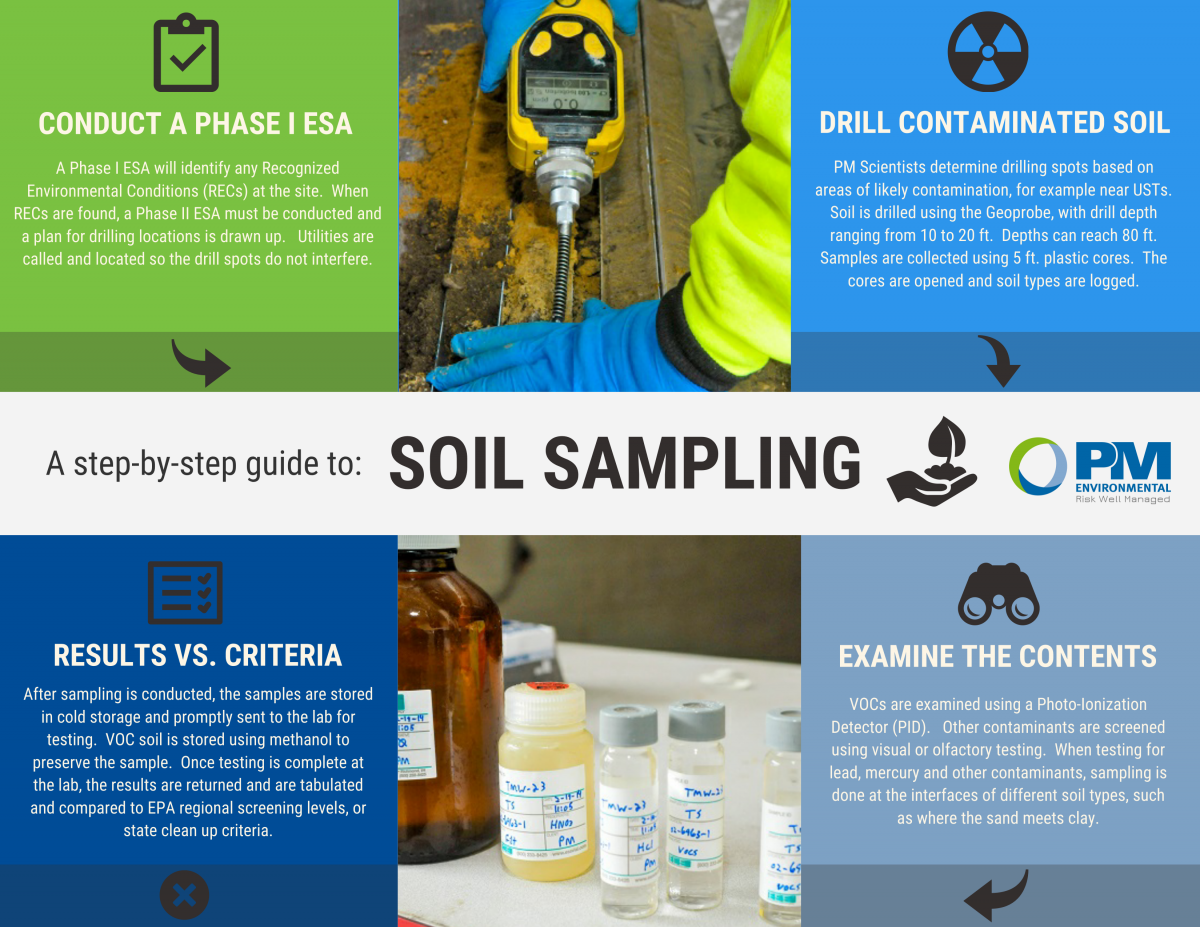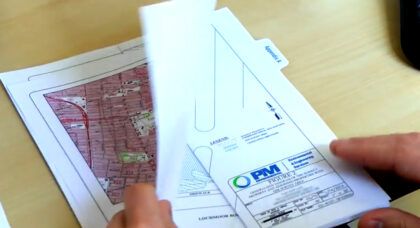How is Soil Sampling Done? {Infographic}
When a Phase I Environmental Site Assessment (ESA) identifies Recognized Environmental Conditions (RECs) on a property, the next step of action is to conduct a Phase II ESA. Part of the Phase II involves soil sampling, in which scientists drill into the potentially contaminated areas using a Geoprobe. Samples of soil are collected, logged and sent to a lab for further testing. They are then compared to the EPA regional screening levels to determine if the contamination levels are above the alotted criteria.
See how soil sampling is conducted:
PM also has success in mitigating vapor intrusion on a variety of projects through Sub-Slab Soil Gas Sampling to identify the levels assess the potential risk, as well as, the installation of Sub-Slab Depressurization Systems, which are common mitigation systems for existing construction.
Talk to us today!




